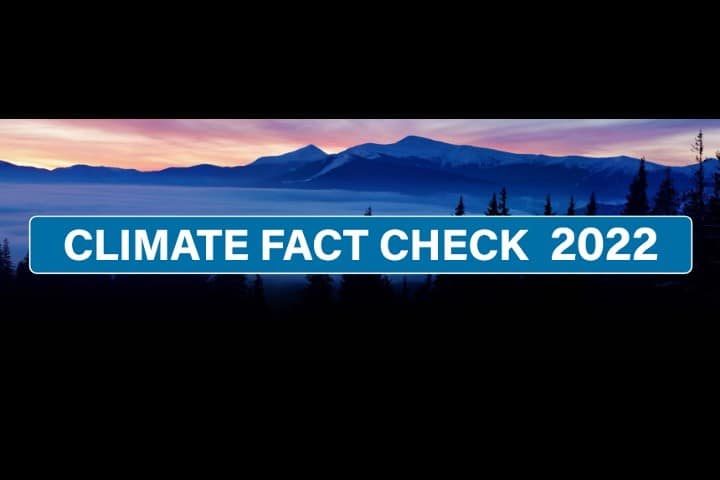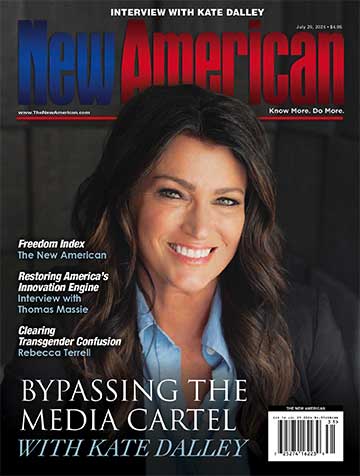
If you happen to believe that much of the hype surrounding so-called climate change is manufactured by an agenda-driven mass media, you’re not alone. A new report created by the Competitive Enterprise Institute (CEI), the Heartland Institute, and other climate realism groups presents several examples of media hyperbole in regard to the climate-change narrative currently being pushed by globalist entities such as the United Nations.
Climate Fact Check 2022 details just a few instances of how mainstream media exaggerates weather events, making them seem unprecedented or historical when the actual truth is far different.
The report states: “Climate alarmists and their media allies once again made a slew of claims about natural disasters being caused by manmade emissions in 2022. And once again, these claims clashed with reality and science.”
The new report singled out the Associated Press (AP) and its reporter Seth Borenstein for a recent article in which he laments monsoon-related flooding in Pakistan, Hurricane Ian, and various droughts around the world.
“Weather disasters, many but not all of them turbocharged by human-caused climate change, are happening so frequently that this year’s onslaught, which 20 years ago would have smashed records by far, now in some financial measures seems a bit of a break from recent years,” Borenstein wrote.
The CEI report points out that, in fact, the AP — supposedly a well-respected news organization — has begun to accept donations ($8 million so far) to “turbocharge” their reporting on climate-change related issues. The AP itself refers to the phenomenon as “philanthropy-funded news.”
Since the donors to the AP — the William and Flora Hewlett Foundation, the Howard Hughes Medical Institute, Quadrivium, the Rockefeller Foundation, and the Walton Family Foundation — all have a bias toward the climate-crisis agenda, how fair and balanced can such “philanthropy” driven reporting be?
This year’s flooding in Pakistan is another example of reporting on the event driving unwarranted hysteria. Indeed, this year’s monsoon was terrible, with flooding occurring in nearly 30 percent of the country. The BBC noted that “global warming is likely to have played a role in the devastating floods that hit Pakistan.”
So devastating was the flooding that the UN and the country began demanding that First World nations, such as the United States, begin paying climate “reparations” to Pakistan, since they produce so little in the way of greenhouse gas emissions.
“Global warming is the existential crisis facing the world and Pakistan is ground zero — yet we have contributed less than 1% to [greenhouse gas] emissions. We all know that the pledges made in multilateral forums have not been fulfilled,” said Sherry Rehman, Pakistan’s Minister of Climate Change.
But despite media reports of the worst flooding ever in Pakistan, even the World Weather Attribution team, which seeks to connect extreme weather events to man-made climate change, admitted that this year’s flooding was within the range of historical natural variability. In fact, Pakistan’s season was not the worst ever, but only the worst since 1961.
This year’s Hurricane Ian, which devastated portions of Florida in September, was also blamed on climate change, even though hurricanes occur commonly in that part of the world.
CEI pointed out that while Ian was indeed a destructive storm, it was not “historic” or abnormally large. In fact, Ian occurred during a hurricane season which NOAA itself has admitted fell short of their predictions in terms of the number and severity of storms.
The report also commented on media climate hysteria surrounding European and Chinese droughts, a famine in the Horn of Africa, the summer heat wave in the United Kingdom, flooding in the Yellowstone River, and Lake Mead’s low water levels, and even hysterical reports that the World Cup skiing season was in jeopardy due to a lack of snow.
Steve Milloy, a biostatistician and environmental and public health consultant — who is much hated by the climate-change cult for his reality-based takes on climate change — blames simple laziness for the media’s incomplete and hysterical climate reporting.
“I think that reporters have gotten … I guess a charitable description would be lazy,” Milloy said. “And so anytime something bad happens, they just automatically blame it on climate change. There’s no thinking going on anymore.”
Indeed, there may be some laziness at work in regards to climate journalism — but it’s also very purposeful. Today’s climate reporting is crafted to instill fear and promote the ridiculous idea that only a government — particularly a global government — has any answers to address the situation.
In climate reporting, one motto rings true: Fear sells.




